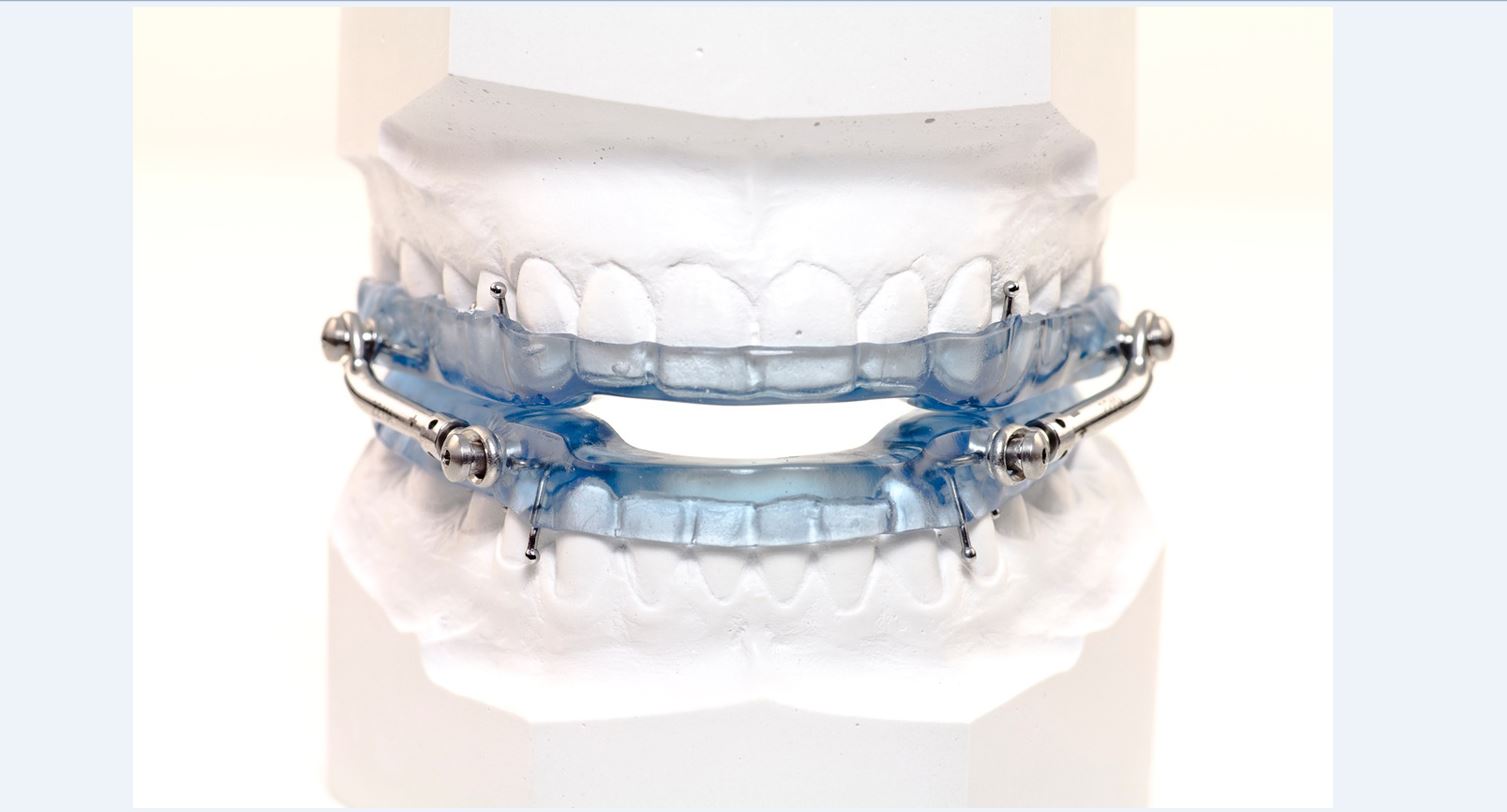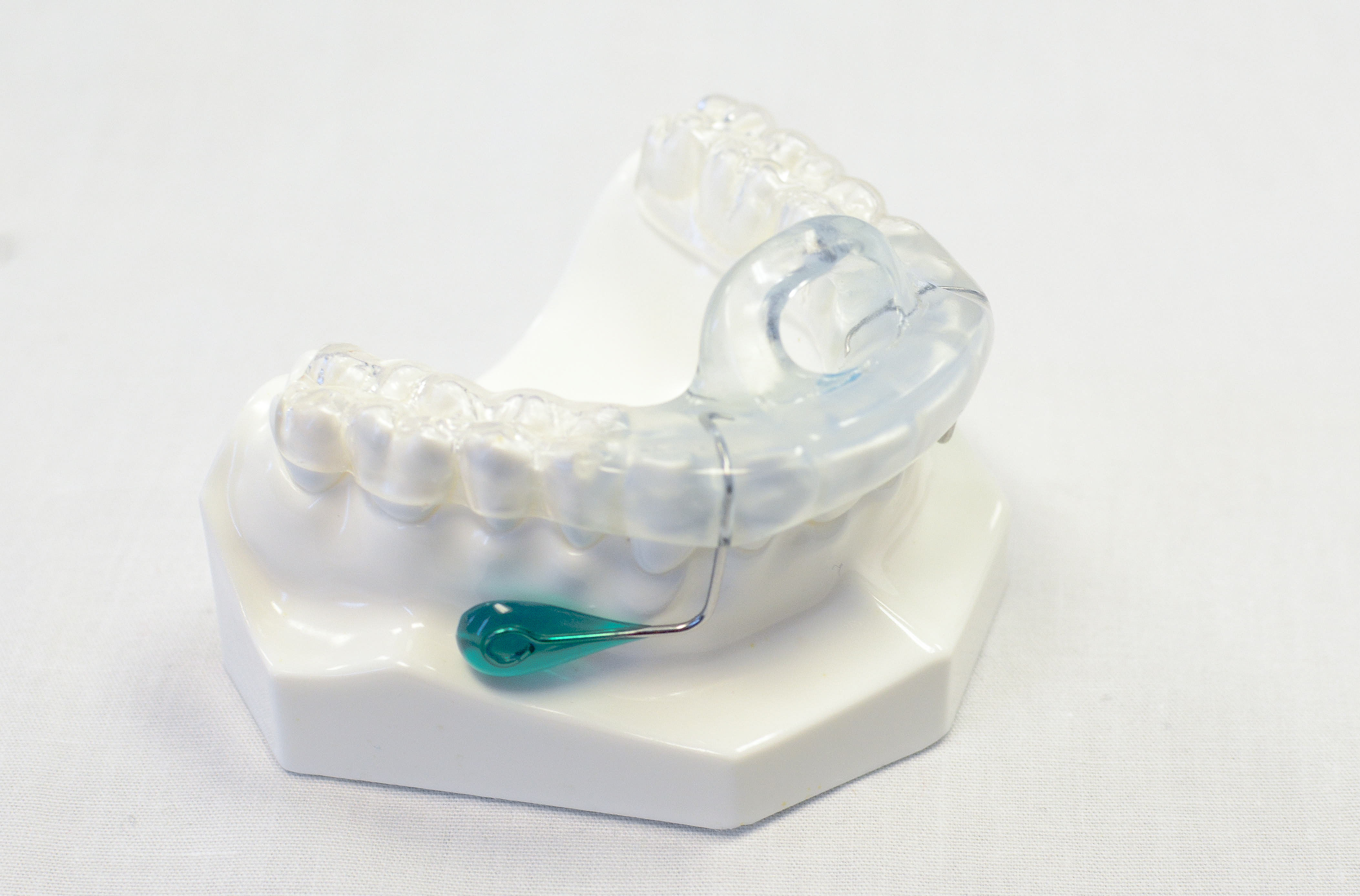It is the first dental device for Snoring, Obstructive Sleep Apnea (OSA) and Upper Airway Resistance Syndrome (UARS) that treats the two major causes of sleep disorder breathing by addressing upper airway resistance in the nasal region and blockage in the throat region. In America the Oasys O2 is an FDA approved medical device in two separate classifications (1) mandibular repositioner for the treatment of snoring and sleep apnea and (2) a nasal dilator for improved ease of breathing. The Oasys O2 treats both vulnerable areas of the upper airway with one patented system while strengthening the throat area by pulling the lower jaw and tongue forward to prevent the tongue from blocking the airflow and strengthening the throat against collapse.
In America the Oasys O2 is an FDA approved medical device in two separate classifications (1) mandibular repositioner for the treatment of snoring and sleep apnea and (2) a nasal dilator for improved ease of breathing. The Oasys O2 treats both vulnerable areas of the upper airway with one patented system while strengthening the throat area by pulling the lower jaw and tongue forward to prevent the tongue from blocking the airflow and strengthening the throat against collapse.
The Benefit of Mandibular Advancement to the Snoring & OSA Patient is enhanced with Nasal Dilation and Tongue Training
 The Anterior Labial Shield adjusts easily forward and backward, 8-15mm on parallel bars with an easy locking system and a millimetre scale. A thin Clear Splint acts as a cushion to reduce pressure on the upper anterior teeth and being unattached, provides greater freedom of movement.
The Anterior Labial Shield adjusts easily forward and backward, 8-15mm on parallel bars with an easy locking system and a millimetre scale. A thin Clear Splint acts as a cushion to reduce pressure on the upper anterior teeth and being unattached, provides greater freedom of movement.
Patented Nasal Dilators increase airflow through the nose with internal extensions in the maxillary vestibule that stretch the nasiolabial fold, easily adjusted intraorally.
Patented Lingual Tongue Buttons extend downwards/outwards off the lower splint in the posterior molar region to guide the tongue up and forward to the palate. This also makes the patient’s swallowing more dynamic, establishing a better tongue posture. The Oasys is a good choice for a patient wearing a good fitting Upper Denture, which will be worn in place of the Upper Splint.
The Oasys can also be used with Invisalign®. The Upper Invisalign® tray is worn in place of the Upper Oasys Splint and the lower splint is designed to function over the Invisalign® trays during treatment.
Dr Mark E. Abramson
Dr Mark Abramson directs Stanford Universitys Mindfulnes
s Based Stress Reduction Clinic and teaches on going classes on this program through Stanford University School of Medicine. Dr Abramson is a Diplomat, American Academy of Dental Sleep Medicine, and a Fellow, American Academy of Cranial Facial Pain Management. In 2004 he received FDA approval for the O2 Oasys Oral/Nasal Airway System™. It was reviewed by the dental and ENT divisions of the FDA and approved as a nasal and pharyngeal dilator in treatment of snoring and sleep apnea. Functional Orthotic Design is proud to be the recognised Australian distributor of Oasys O2.
Core Features and Benefits
Mandibular Repositioning
– repositions the mandible forward which brings the base of the tongue forward, opening the oropharynx and strengthening the upper airway. This results in greater resistance to airway collapse. By holding against the front teeth it uses the proprioceptive stimulation of the dentition to encourage the mandible to reposition in a gentle way.
Nasal Dilation
– accomplishes dramatic nasal opening by means of the “nasal buttons” that extend off the upper shield that applies a stretch to the inner nasal structure from within the mouth. Our research shows an increase of 14% volume in the nasal valve which can represent a 48% increase in airflow and reduction in resistance of the nasal passage by one half.
Adjustability
– easily adjusted to position the mandible in the most effective forward posture. Simply moving the lower base segment forward to slide the connecting wire through the tube and locking the stop collar back down to the new position, the OASYS is now ready to wear.
Maximum Intraoral Volume
– accomplishes dual action of mandibular repositioning and nasal dilation while maintaining maximum intraoral space for the tongue. It even has an opening between the front teeth to invite the tongue forward so that the base of the tongue is brought forward and the oropharynx is maximally opened.
Reduction of Forces on Teeth
– comes with an upper splint that distributes the forces of repositioning throughout the entire upper arch and provides a cushion for the upper component. The OASYS Oral/Nasal/Airway SystemTM has a natural flexibility of the connecting wire that will “give” in response to retrusive movements of the mandible.
Freedom of Movement
– fixed solely to the lower arch. This creates a freedom of motion by allowing movement of the mandible in all directions without locking onto the upper arch.
Upper Airway Resistance- Snoring
Breathing requires the movement of air through a long pathway. In this pathway, there are two critical areas that can impede or completely stop the flow of air during sleep.
The nasal and pharyngeal regions are the two primary areas where upper airway resistance occurs. The predominant signs of this resistance is vibration of the pharyngeal walls which is heard as snoring.
Snoring is now known to be a sign of strained breathing which can effect one’s ability to have a restful sleep and can be a sign of a more serious problem, obstructive sleep apnea or OSA. OSA can pose a significant risk to one’s health as well as to the health of one’s bed partner.
Hypopnea
Resistance to airflow through the upper airway (nose and throat) can reduce the amount of air reaching the lungs, reducing blood oxygen concentration (hypoxia). The body senses the low blood oxygen level and the heart works harder to try to get more oxygen to the body leading to chronic strain on the heart and an increase in blood pressure.
Apnea
Apnea is the complete stoppage of the airflow that occurs when the upper airway resistance in the nose and throat causes enough of a force to close the airway completely stopping breathing for a period of time. The most common cause of blockage of the air is the tongue falling back into the throat. Oral Appliances fall the jaw and tongue forward to prevent this blockage.
Arousal
Both apnea and hypopnea lead to a reduction of blood oxygen. The body signals an alarm and releases a burst of adrenaline to wake up and breathe. The constant arousals keep you from going into deep restful sleep and cause serious health consequences.
Apnea-Hypopnea Index
When either hypopnea or apnea occurs, they are scored as a respiratory disturbance event. The number of events per hour is referred to as the AHI, the Apnea-Hypopnea Index. The AHI determines the degree of OSA, mild, moderate or severe.
Sleep is a very important part of a healthy existence. The problems associated with sleep are numerous and serious. Clinical signs and symptoms exist so it is necessary to know what to look for.
Oral Appliances are a recommended first line treatment option for patients with mild to moderate sleep apnea and for patients with CPAP intolerance in cases of severe OSA.
Functional Orthotic Design is at the forefront of design and manufacture of these types of appliances.

TAP your patient into a good nights sleep .
READ PROFILE
The Herbst Appliance has been proven to be effective on chronic snoring and mild to moderate Obstructive Sleep Apnea sufferers. This appliance allows patients to move laterally and vertically without disengaging the appliance. Also, if it is determined that the initial position does not provide the anticipated relief of […]
READ PROFILE
Improves your patients nasal breathing
READ PROFILE